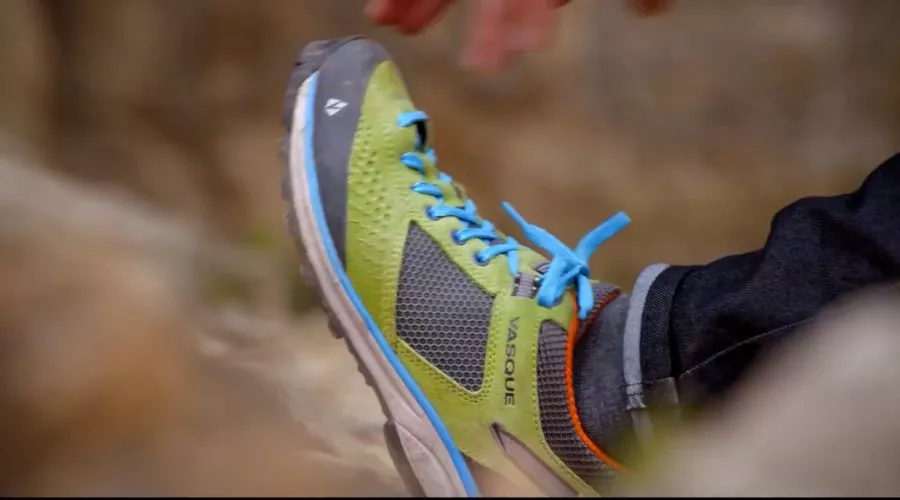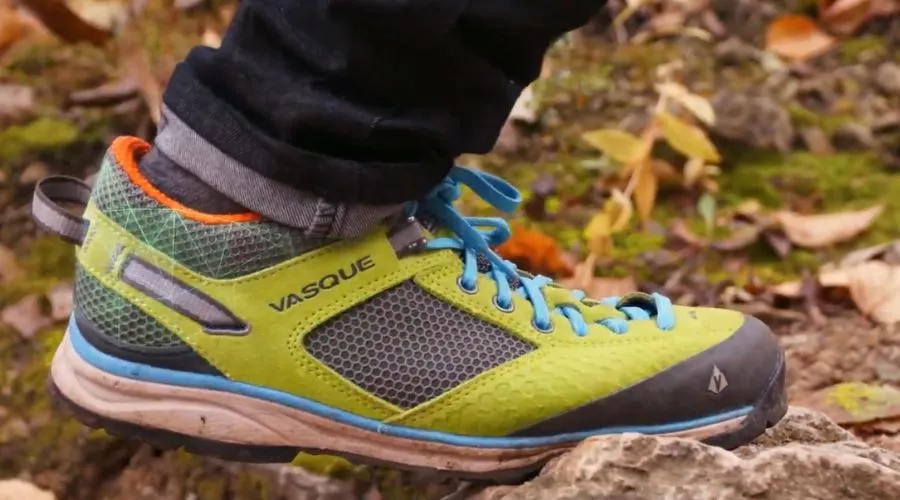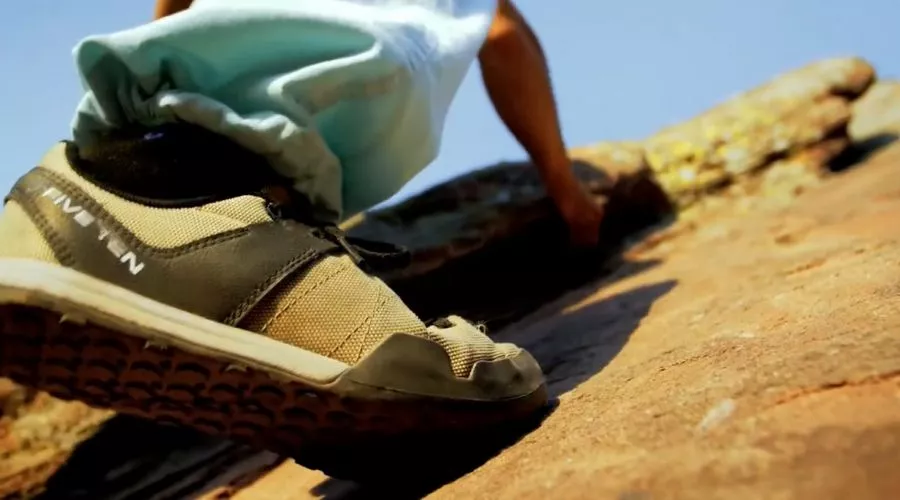
Climbing is an incredibly fun and adventurous activity, but what most people don’t realize is the importance of having the right equipment.
Approach shoes and regular climbing shoes are two of the most important pieces of gear for a climber and it can be difficult to decide which one is best for your needs.
Both types of shoes offer a variety of benefits, but they are designed for different types of terrain and climbing styles. So, which is the better choice?
I will compare approach shoes vs. regular climbing shoes to help you decide which one is best for your climbing needs.
I will also look at the features, advantages, and disadvantages of each type of shoe and discuss which is better for different types of climbing.
What Are Approach Shoes?
Approach shoes are designed for long walks to your climbing area. They are lightweight and have low-to-the-ground traction to provide stability on uneven terrain. Approach shoes are not designed for technical climbing or crack climbing.

Instead, they are designed for easy, non-technical terrain like a dirt path or gravel road where your foot protection isn’t an issue.
Some approach shoes can be used for short, non-technical rock climbs, but they are not designed for the specific needs of rock climbing.
Approach shoes are generally less technical than regular climbing shoes. They often have a less aggressive fit and a less supportive upper to allow for better mobility when walking.
They are generally made with a softer and more flexible outsole that grips the ground less aggressively to reduce foot drag.
These shoes have a less aggressive heel and a more flexible midsole to allow for a more natural walking motion.
Approach shoes are normally less expensive in price than regular climbing shoes.
What Are Regular Climbing Shoes?
Regular climbing shoes are more technical and specialized climbing shoe.
They are designed for climbing that requires precision and accuracy while keeping your foot protected from the rock.

Some regular climbing shoes can be used for easy or non-technical climbing, but they are designed for technical climbing that requires a secure fit and precise foot movement.
They are designed with a stiffer midsole and a more aggressive outsole to be stiffer and to provide greater traction while edging on the rock.
These shoes have a more supportive upper with a tighter fit to keep your foot protected while climbing on small rocks or on the wall.
Features of Approach Shoes vs. Regular Climbing Shoes

Let’s take a look at the features that make up approach shoes and regular climbing shoes so you can understand how they are different.
Comparison of Approach Shoes Vs Climbing Shoes
Let’s compare approach shoes vs. regular climbing shoes so you can see how they differ.
First off, approach shoes are designed to offer a combination of walking comfort, stability and climbing performance.
They typically have a sticky rubber outsole for grip on rocks, and a stiff midsole for added support and protection. The uppers may be made of leather or synthetic materials, and they often have a reinforced toe box for extra durability when scrambling over rocks.
Climbing shoes, on the other hand, are specifically designed for climbing. They are usually made of leather or synthetic materials with a highly sensitive and sticky rubber outsole. The uppers are generally either unlined or lined with leather for added comfort.
The soles are usually quite thin and flexible, allowing for precision foot placement on the rock. In terms of performance, approach shoes are the more versatile option as they can be used for both walking and climbing.
However, if you’re looking for maximum performance when climbing, climbing shoes are your best bet as they offer superior grip and flexibility.
Advantages of Approach Shoes

1. Comfort: Approach shoes are designed to be comfortable, with cushioning and support for the foot, ankle, and heel. The soles are usually made from a softer rubber that is more comfortable to walk on than regular hiking boots.
2. Versatility: Approach shoes are designed to be versatile, with features that make them great for a variety of activities. They are designed for hiking, scrambling, climbing, and other outdoor activities. They also transition easily from indoor to outdoor activities, so you can wear them to the grocery store or a restaurant without having to change shoes.
3. Durability: Approach shoes are made with durable materials that can withstand rugged outdoor terrain. The soles are usually made from rubber and can last a long time with proper care.
4. Traction: The outsoles of approach shoes are designed with aggressive treads that offer great traction and grip on different terrain, including wet surfaces and rocky trails.
5. Water Resistance: Many approach shoes are treated with a water-resistant coating that helps protect your feet from getting wet in wet conditions. This is especially helpful if you’re out in the rain or snow.
Advantages of Climbing Shoes

Regular climbing shoes provide more foot protection than approach shoes.
They are designed to protect your foot while climbing and are sturdier and more durable than approach shoes.
Regular climbing shoes normally have a stiffer midsole that is designed to provide more edging power and support while climbing on steep terrain.
They are designed with a more aggressive outsole that provides greater traction when climbing on the rock.
Regular climbing shoes last longer than approach shoes because they are designed for more precise climbing. They are normally more expensive than approach shoes.
FAQS
Can you use approach shoes for climbing?
Yes, you can use approach shoes for climbing. Approach shoes are designed to be lightweight and comfortable, making them an ideal choice for climbers who want to get to their climbing destination quickly and comfortably. Approach shoes are also designed with extra grip and support, allowing them to handle a variety of terrain and provide the necessary traction for climbing. The rubber outsoles on approach shoes provide superior grip on slippery surfaces, as well as excellent traction on rocky terrain. When it comes to climbing, approach shoes offer more stability than regular sneakers and provide the necessary protection and support for your feet. The stiff midsole will give you better support while climbing, while the higher ankle will protect your ankles from potential sprains. Overall, approach shoes are a great option for climbers looking for a lightweight, comfortable shoe that can handle the toughest terrain. They offer extra grip and support, as well as greater stability than regular sneakers.
What is the difference between climbing and approach shoes?
Climbing shoes are designed specifically for rock climbing. They have a snug fit and are typically made of leather or synthetic materials. The tightness of the fit allows for maximum sensitivity on the rock, helping climbers feel the smallest of features. Climbing shoes also have an aggressive downturned shape to help climbers with edging and smearing on steep walls. Approach shoes, on the other hand, are designed for the terrain leading up to a climbing destination. Approach shoes are usually made with a combination of sticky rubber soles and tough leather uppers, making them very durable and providing excellent traction. They also usually have a flat or slightly downturned shape, which makes them comfortable to wear over long distances.
Why are they called approach shoes?
Approach shoes are so named because they are designed specifically for the purpose of “approaching” a mountain or rock climb. They feature a combination of hiking and climbing features that make them ideal for everything from light scrambling to technical climbing.
The term “approach shoes” comes from the fact that these shoes are meant to be used when you are “approaching” a climb. This means they are designed to handle the terrain you will encounter while you walk up to the base of the climb, such as dirt, rocks, and gravel. They also feature rubber soles that are designed to grip the terrain, allowing you to move with confidence and control.
The combination of features in approach shoes makes them ideal for a variety of activities. For climbers, they provide the protection and grip needed to move safely and securely on technical climbs. For hikers, they provide the comfort and support needed for those long treks in the backcountry. And for those just looking for a comfortable and stylish shoe, approach shoes offer a great blend of style and performance.
No matter what your activity of choice is, if you’re looking for a great all-around shoe that can handle a variety of terrain and conditions, approach shoes are definitely worth considering!






